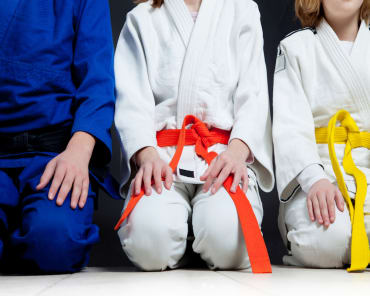Brazilian Jiu-Jitsu (BJJ) is not just a martial art; it's a journey of self-discovery, resilience, and continuous growth. Achieving the rank of a purple belt in BJJ is a significant milestone, symbolizing a deep understanding of the art and a commitment to personal development. Let's explore the key aspects of the journey to becoming a BJJ purple belt.
1. Foundations and White Belt Beginnings
The journey to a BJJ purple belt starts with the foundations laid during the white belt phase. This initial stage involves learning fundamental techniques, positions, and submissions. White belts focus on understanding the principles that form the bedrock of BJJ. Consistency in training, dedication, and a willingness to learn are essential attributes during this foundational period.
2. Blue Belt Blues: The Grind Continues
Upon reaching the blue belt, practitioners gain a more nuanced understanding of BJJ. The blue belt phase is often referred to as the "grind" – a time when practitioners hone their skills, troubleshoot weaknesses, and deepen their knowledge. It requires perseverance and resilience as the challenges become more complex. Blue belts learn to adapt and refine their techniques, developing a more strategic and thoughtful approach to sparring.
3. Technique Mastery and Application
As practitioners advance towards the purple belt, a noticeable shift occurs in their ability to execute techniques with precision and fluidity. Purple belts showcase a more extensive repertoire of submissions, escapes, and transitions. Mastery of techniques becomes a focus, emphasizing the importance of timing, leverage, and finesse. The purple belt practitioner is adept at reading their opponent's movements and can seamlessly apply techniques in live sparring scenarios.
4. Developing a Personal Style
One of the defining characteristics of a BJJ purple belt is the development of a personal grappling style. While fundamentals remain crucial, purple belts start to incorporate their unique flair into their techniques. This phase allows practitioners to explore various positions, submissions, and strategies, ultimately shaping their distinctive BJJ identity. Embracing individuality becomes a key aspect of the journey.
5. Mental Toughness and Mindset
The path to a BJJ purple belt is not solely physical – it requires mental toughness and the right mindset. Purple belts demonstrate a resilience to setbacks, a willingness to learn from mistakes, and the ability to adapt to different grappling styles. Mental fortitude becomes a crucial element as practitioners face tougher challenges and opponents.
6. Teaching and Leadership Skills
Purple belts often find themselves in a mentorship role, guiding lower-ranked practitioners. Teaching others not only reinforces their understanding of techniques but also instills leadership skills. The ability to convey knowledge and offer constructive feedback is a significant aspect of the purple belt journey.
7. Consistency and Dedication
Above all, consistency and dedication are non-negotiable on the road to a BJJ purple belt. Regular training, attending classes, and maintaining a genuine passion for the art are essential. The purple belt is a testament to the practitioner's commitment to the art of Brazilian Jiu-Jitsu.
In conclusion, the journey to becoming a BJJ purple belt is a transformative experience that encompasses technical proficiency, mental resilience, and a deep connection to the art. It's not just about achieving a new belt; it's about evolving as a martial artist and embracing the ongoing process of growth and self-discovery that BJJ offers. The purple belt is not the end but rather a milestone in the lifelong journey of a dedicated Brazilian Jiu-Jitsu practitioner.






